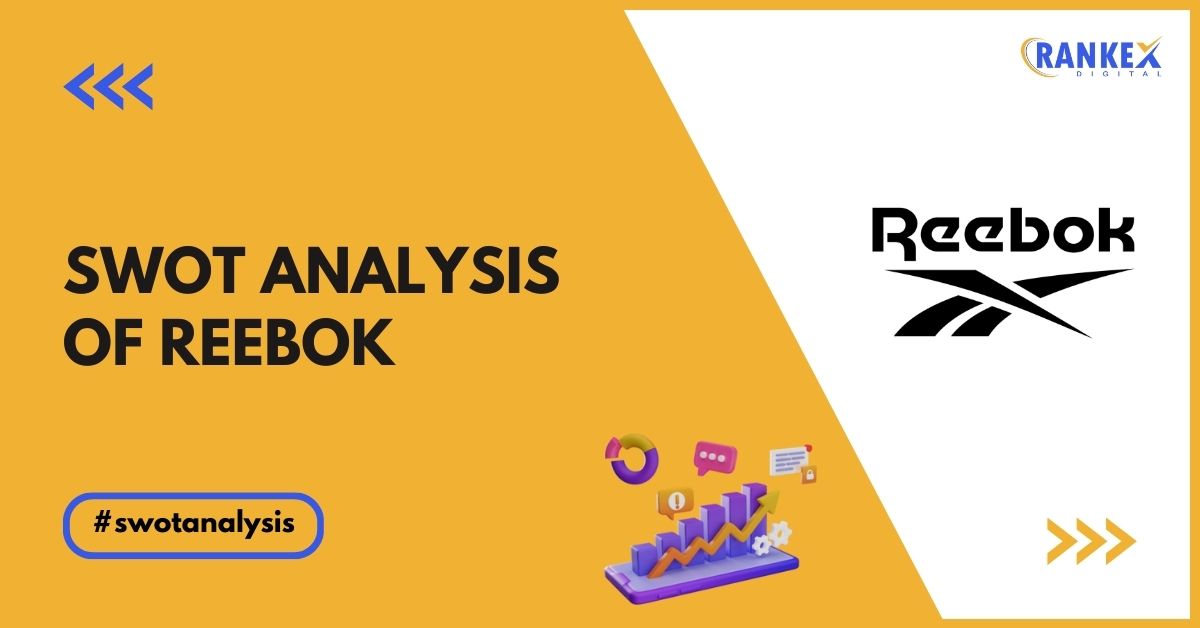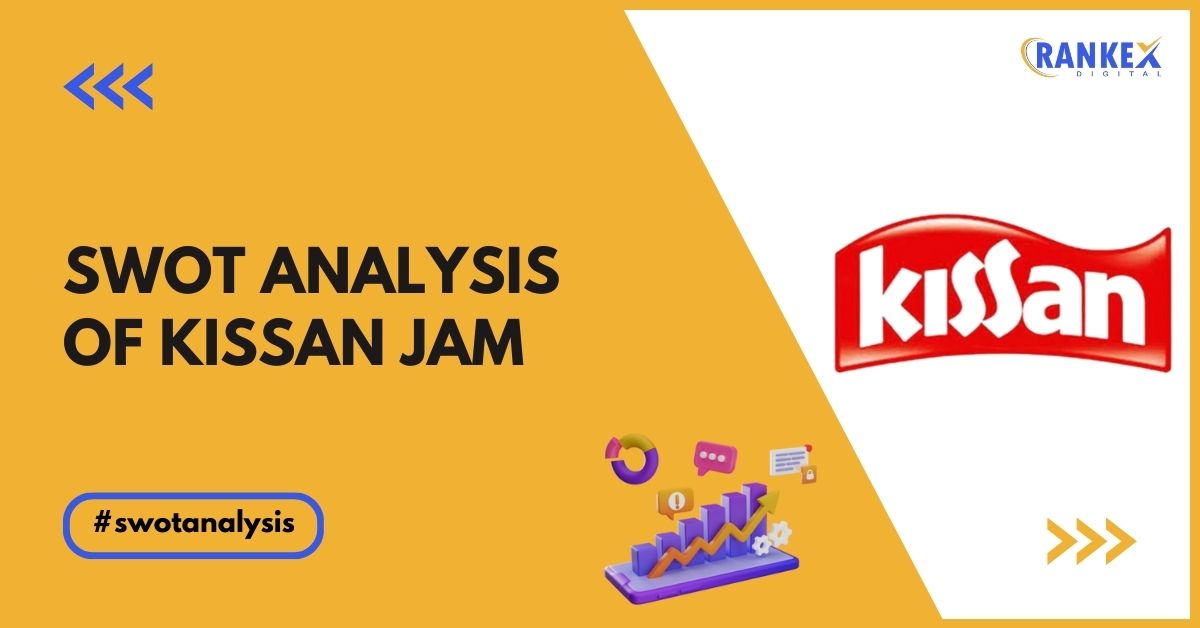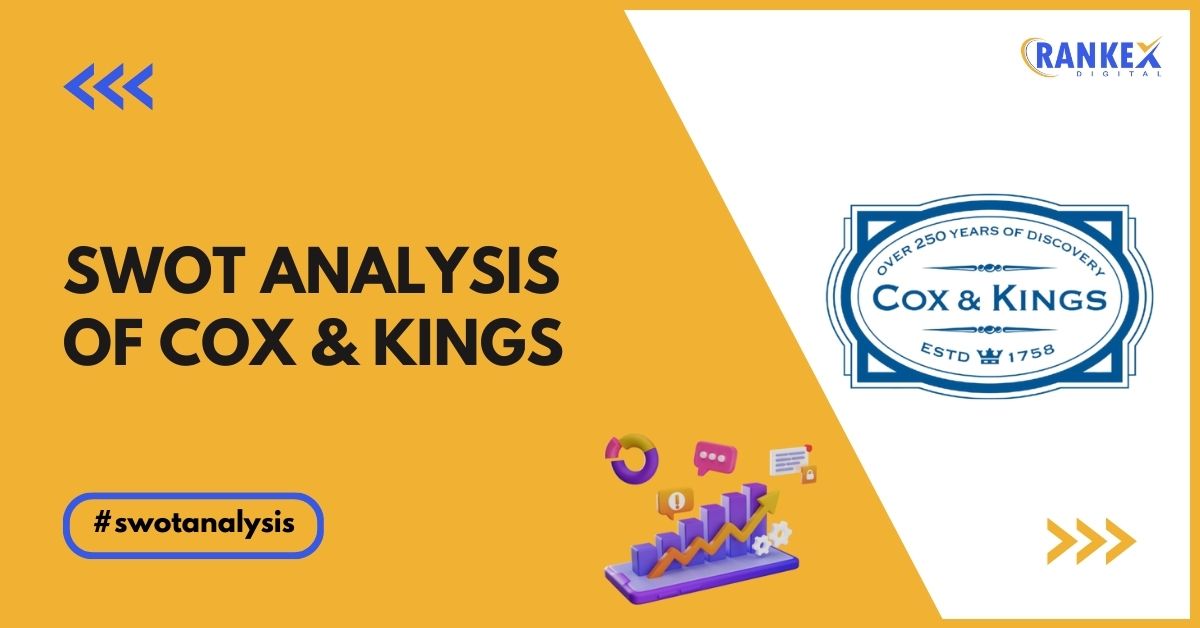Cadbury, a globally recognized brand, is one of the leading chocolate manufacturers in the world. Known for its iconic Dairy Milk chocolate, Cadbury has built a strong presence in the confectionery market. Understanding the strengths, weaknesses, opportunities, and threats (SWOT) of Cadbury is crucial for analyzing its competitive position and strategizing for future growth.
This article provides a comprehensive SWOT analysis of Cadbury, exploring its key attributes and market dynamics.
Table of Contents
Overview of Cadbury
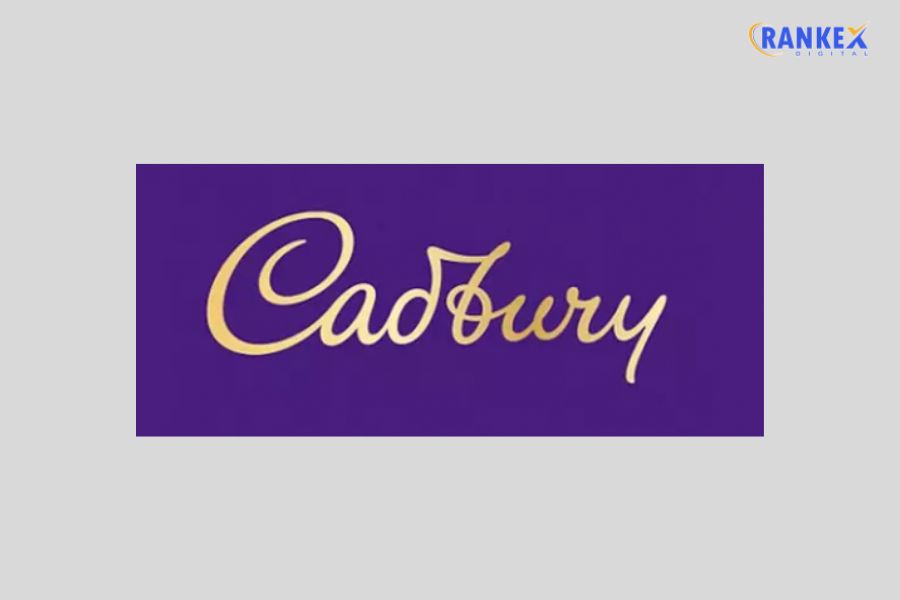
Cadbury was founded in 1824 by John Cadbury in Birmingham, England. It has since grown into a global brand, synonymous with quality chocolate products. The company was acquired by Mondelez International in 2010, becoming a key part of Mondelez’s global portfolio.
Headquartered in Uxbridge, London, Cadbury operates in over 50 countries, with its products enjoyed by millions of consumers worldwide.
Quick Stats About Cadbury
| Founder | John Cadbury |
|---|---|
| Year Founded | 1824 |
| Origin | Birmingham, England |
| No. of Employees | 70,000+ (under Mondelez International) |
| Parent Company | Mondelez International |
| Industry | Confectionery |
| Annual Revenue | $29 Billion (Mondelez International, FY 2023) |
| Net Profit | $4 Billion (Mondelez International, FY 2023) |
Current News of Cadbury
- Sustainability Initiatives: Cadbury has committed to sourcing 100% sustainable cocoa through the Cocoa Life program, aiming to improve the lives of cocoa farmers and their communities.
- New Product Launches: Cadbury continues to innovate with new product offerings, including healthier snack options and limited-edition flavors to cater to evolving consumer preferences.
- Marketing Campaigns: Cadbury is known for its memorable advertising campaigns, recently focusing on emotional connections and community spirit.
- Expansion in Emerging Markets: Cadbury is expanding its presence in emerging markets, particularly in Asia and Africa, to tap into the growing demand for confectionery products.
SWOT Analysis of Cadbury
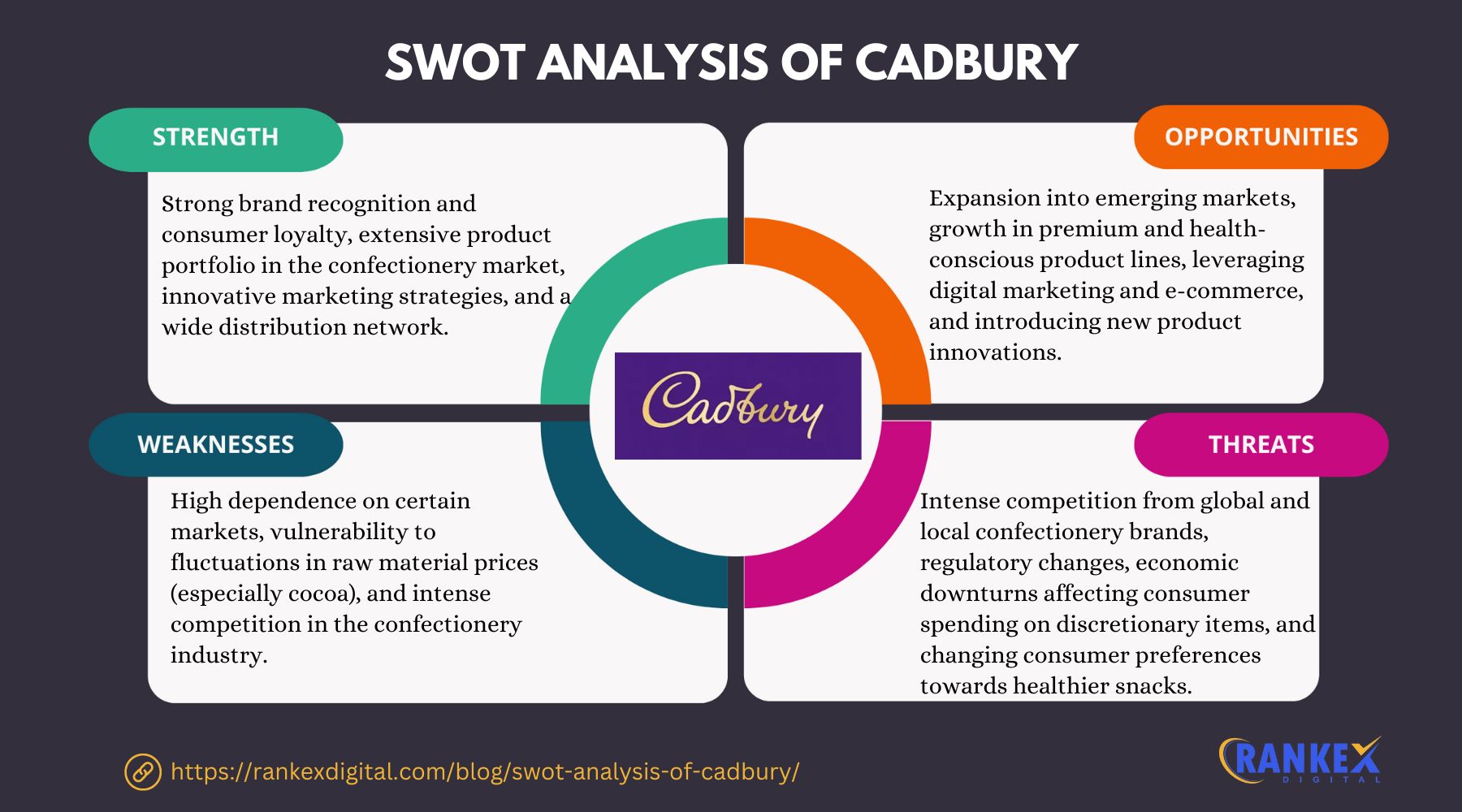
Strengths of Cadbury
- Strong Brand Equity: Cadbury is one of the most recognized and trusted chocolate brands globally, with a rich heritage and loyal customer base.
- Diverse Product Portfolio: Cadbury offers a wide range of products, including chocolates, biscuits, candies, and beverages, catering to different tastes and preferences.
- Innovative Marketing: Cadbury has a history of successful and innovative marketing campaigns that resonate with consumers, helping to maintain its brand relevance.
- Global Reach: Cadbury’s products are sold in over 50 countries, giving the brand a strong global presence and the ability to leverage economies of scale.
- Commitment to Sustainability: Through initiatives like Cocoa Life, Cadbury is committed to ethical sourcing and sustainability, which enhances its brand image and consumer trust.
Weaknesses of Cadbury
- Dependence on Chocolate Products: A significant portion of Cadbury’s revenue comes from its chocolate products, making it vulnerable to changes in consumer preferences towards healthier options.
- High Competition: The confectionery market is highly competitive, with Cadbury facing stiff competition from other global and regional brands.
- Product Recalls: Cadbury has faced product recalls in the past due to contamination issues, which can damage brand reputation and customer trust.
- Price Sensitivity: As a premium brand, Cadbury’s products can be perceived as expensive in certain markets, making them less accessible to price-sensitive consumers.
- Limited Product Diversification: While Cadbury has a strong presence in the chocolate segment, its product diversification into other categories like biscuits and beverages is less pronounced.
Opportunities for Cadbury
- Expansion in Emerging Markets: There is significant growth potential for Cadbury in emerging markets, where increasing disposable incomes and urbanization are driving demand for premium confectionery products.
- Health-Conscious Products: Cadbury can capitalize on the growing trend towards health-conscious eating by developing and marketing lower-sugar, organic, and fortified products.
- Product Innovation: Continuous innovation, including new flavours, limited editions, and healthier options, can help Cadbury attract new customers and retain existing ones.
- Strategic Partnerships: Collaborating with other brands or entering into joint ventures can provide Cadbury with new distribution channels and market access.
- E-commerce Growth: The increasing popularity of online shopping presents an opportunity for Cadbury to enhance its e-commerce presence and reach a broader audience.
Threats to Cadbury
- Health Trends: The global shift towards healthier eating habits and concerns over sugar consumption could negatively impact Cadbury’s sales if it does not adapt its product offerings.
- Raw Material Price Volatility: Fluctuations in the prices of key raw materials, such as cocoa, sugar, and milk, can affect Cadbury’s profit margins.
- Economic Downturns: Economic recessions or downturns can reduce consumer spending on non-essential items like confectionery, impacting Cadbury’s sales.
- Regulatory Challenges: Increasing regulations on sugar content, advertising, and packaging in various countries could pose challenges to Cadbury’s operations.
- Intense Competition: Cadbury faces competition not only from other large confectionery brands like Mars and Nestlé but also from local and artisanal chocolate makers, which can impact its market share.
Top Competitors of Cadbury
- Nestle: A major global competitor in the chocolate and confectionery market, known for brands like KitKat and Smarties.
- Mars, Incorporated: Competes with Cadbury in the chocolate segment with brands like Snickers, M&M’s, and Milky Way.
- Ferrero: Known for its premium chocolates like Ferrero Rocher and Nutella, Ferrero is a strong competitor in the confectionery market.
- Hershey: A leading chocolate manufacturer in North America, known for Hershey’s chocolate bars and Reese’s products.
- Lindt & Sprüngli: A premium chocolate brand that competes with Cadbury in the high-end segment, offering luxury chocolates and truffles.
Conclusion
The SWOT analysis of Cadbury highlights its strong brand equity, diverse product portfolio, innovative marketing, global reach, and commitment to sustainability as key strengths. However, the company faces challenges such as dependence on chocolate products, high competition, product recalls, price sensitivity, and limited product diversification.
Opportunities for Cadbury lie in expanding into emerging markets, developing health-conscious products, continuous product innovation, strategic partnerships, and enhancing its e-commerce presence. On the other hand, threats include health trends, raw material price volatility, economic downturns, regulatory challenges, and intense competition.
By leveraging its strengths and opportunities while addressing its weaknesses and threats, Cadbury can continue to be a leading player in the global confectionery market and drive future growth.


